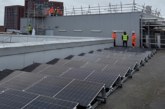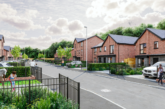 Is Grid Harmony one way to make UK housing net zero? Andy Sutton, Co Founder and Director of Design & Innovation at Sero, outlines the need for new and refurbished homes to work in harmony with the National Grid to ensure our housing stock can deliver genuine decarbonisation.
Is Grid Harmony one way to make UK housing net zero? Andy Sutton, Co Founder and Director of Design & Innovation at Sero, outlines the need for new and refurbished homes to work in harmony with the National Grid to ensure our housing stock can deliver genuine decarbonisation.
In the UK, we hardly ever think about our energy networks. If we have any power cuts, they are headline news precisely because they’re so rare: testimony to the robust infrastructure. But our home energy supplies are a major source of our personal carbon footprints and being smarter about them can support the energy grids whilst reducing our carbon footprints and saving us money. It’s a real win-win-win, and to deliver Net Zero successfully we need to grasp the opportunity.
The UK’s National Grid — the electricity network — emits a varying amount of carbon for the energy it supplies to our homes. For one unit of electricity (a kWh), during any given day it’s commonly true that the carbon emitted could be more than 300g of CO2eq, or less than 300g of CO2eq. The difference in the emissions relates to when the electricity is drawn from the Grid, what the UK Green Building Council’s definition of Net Zero Carbon in Operation calls “time of use”.
Let’s ponder that for a second. The awareness of this daily variation in the Grid could easily mean that the single biggest carbon reduction measure any home can make is changing the timing that it draws electricity from the Grid. Not LED lights, not External Wall Insulation, not Photovoltaics (though they’re all good of course), but simply shifting when the electricity is supplied to the home so that it aligns with when the most renewable generation is occurring across the UK. A modern new-build home will emit 2-3 tonnes CO2eq every year assuming it’s electrified — but adjusting when it draws the electricity could halve that figure.
The National Grid has also been, and is continuing to, undertake significant decarbonisation. Since 2010, average annual Grid electricity emissions have dropped from 500 CO2eq to around 200 CO2eq, and contracts are in place for this to be nearly CO2eq by 2030. Whilst achieving zero emissions all of the time is not likely to happen for decades (if ever), achieving net zero electricity supply some of the time will be happening by 2040. And the homes that only draw electricity from the Grid at those times will therefore be demonstrably Net Zero in operation.
Aligning with the Grid
What does all this mean? Well, one answer is we need residents to be watching the Grid carbon emissions, weather forecasts across the UK, and their energy usage. It means education, a change in behaviours and adjusting when they use their TV, kettle, bath and so forth, to align with when Grid carbon is lowest. And, for some “prosumers”, to a degree that’s what they are doing.
For the rest of us, technology can do the heavy lifting. By designing homes with energy storage systems including hot water tanks and electrical batteries, combined with intelligent controls that spend their time (not ours) watching Grid emissions and weather forecasts, the majority of us can actually carry on living our daily lives much as before. Via the intelligent controls, the homes’ will seamlessly shift from “on grid” to “off grid” in the background, delivering power and heat when we demand it, but ensuring that has the smallest carbon footprint each and every time. That’s not to say we don’t all need to try and be prudent about our energy usage, but with homes built to work in harmony with the Grid, our effort to mitigate will be magnified on our behalf.









